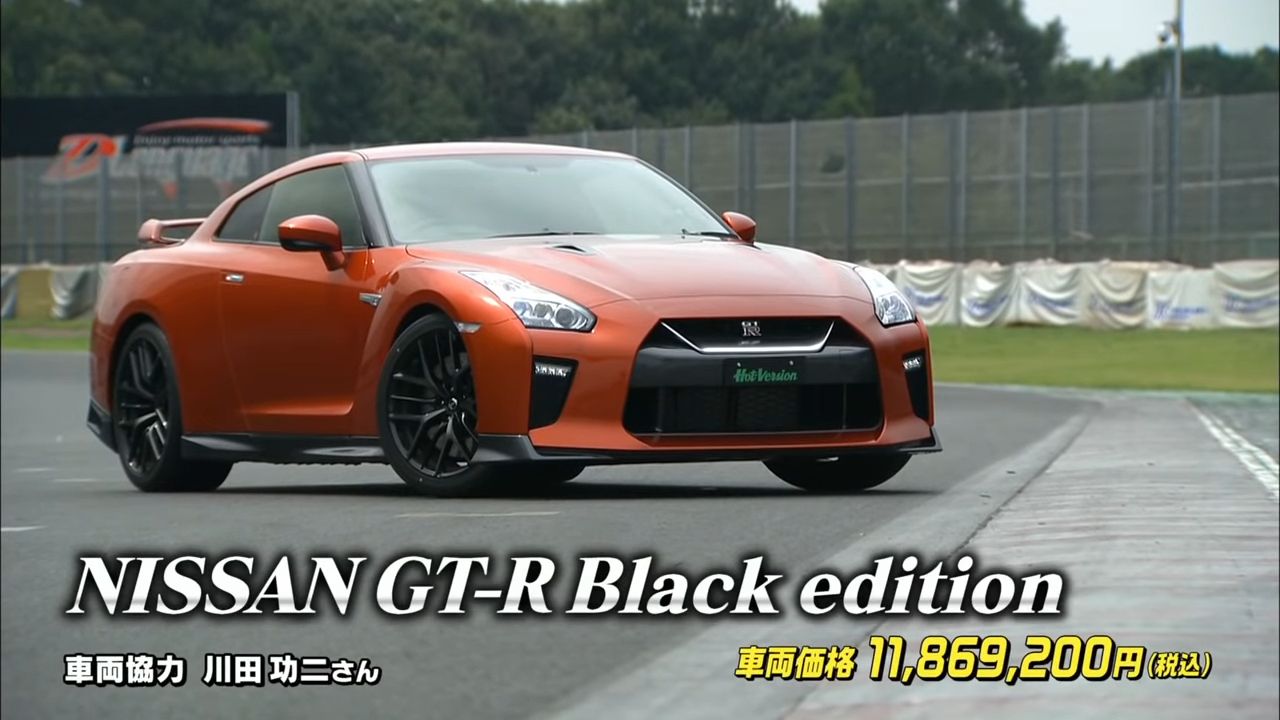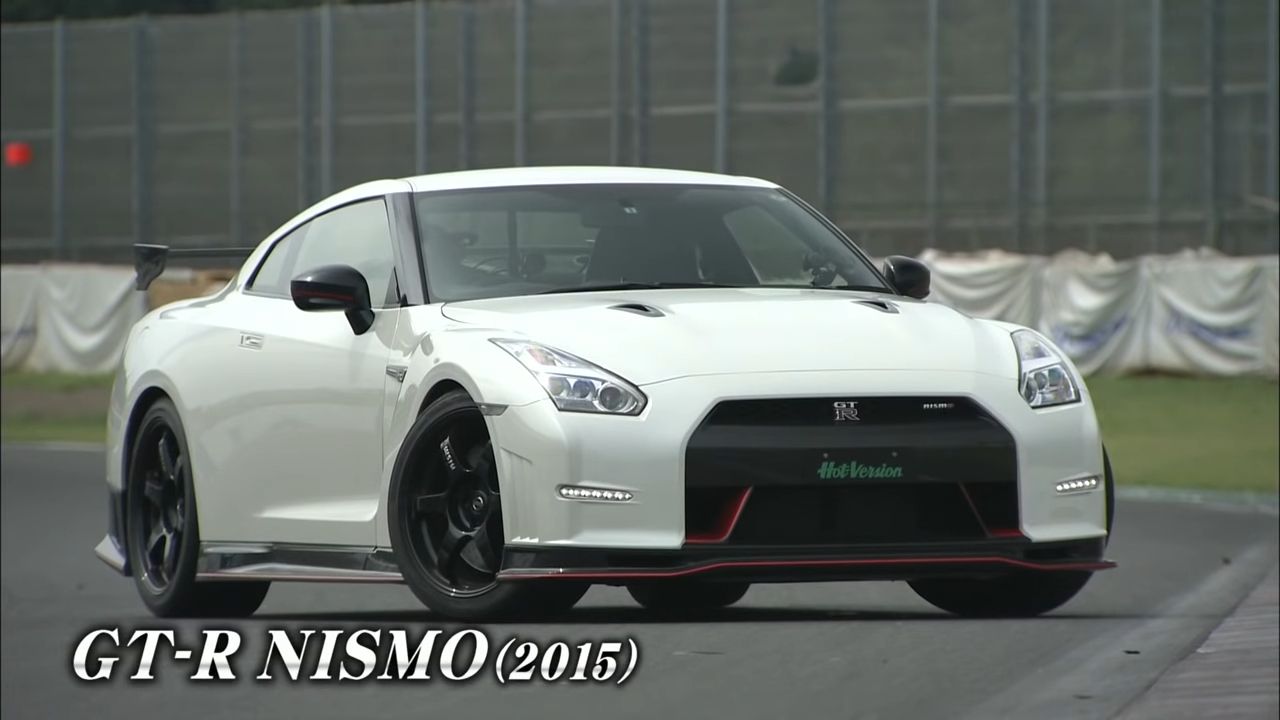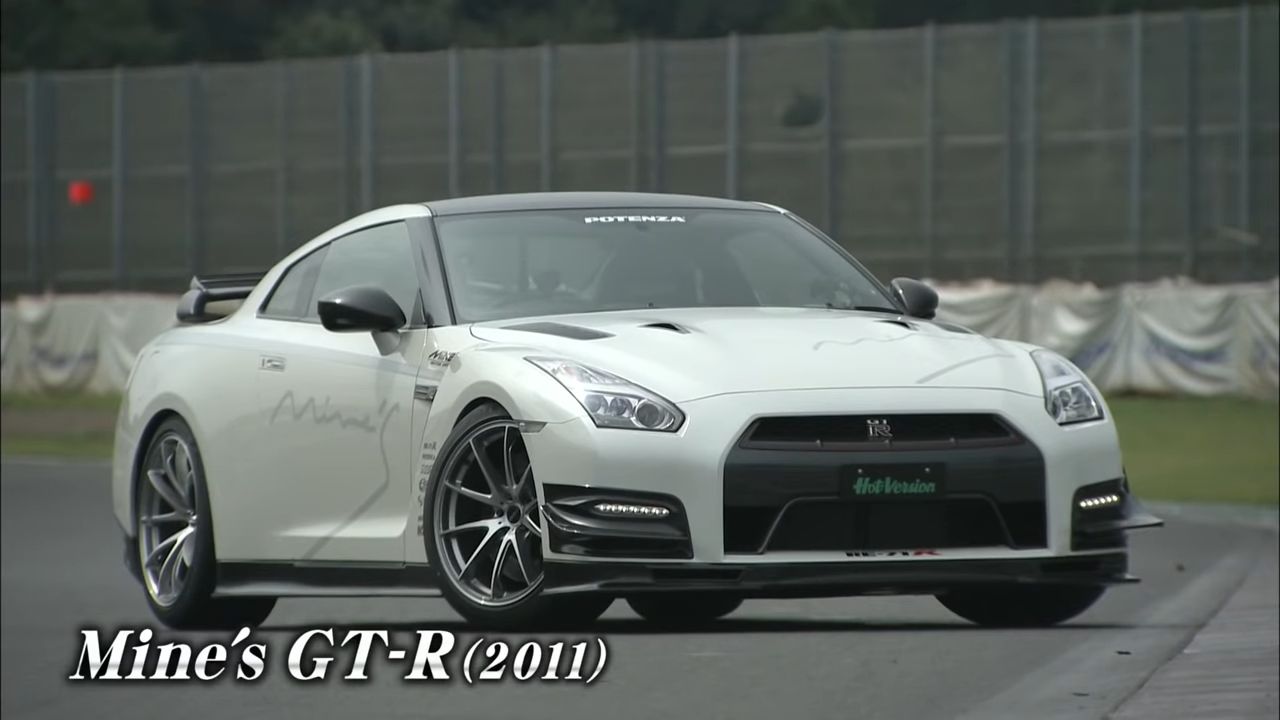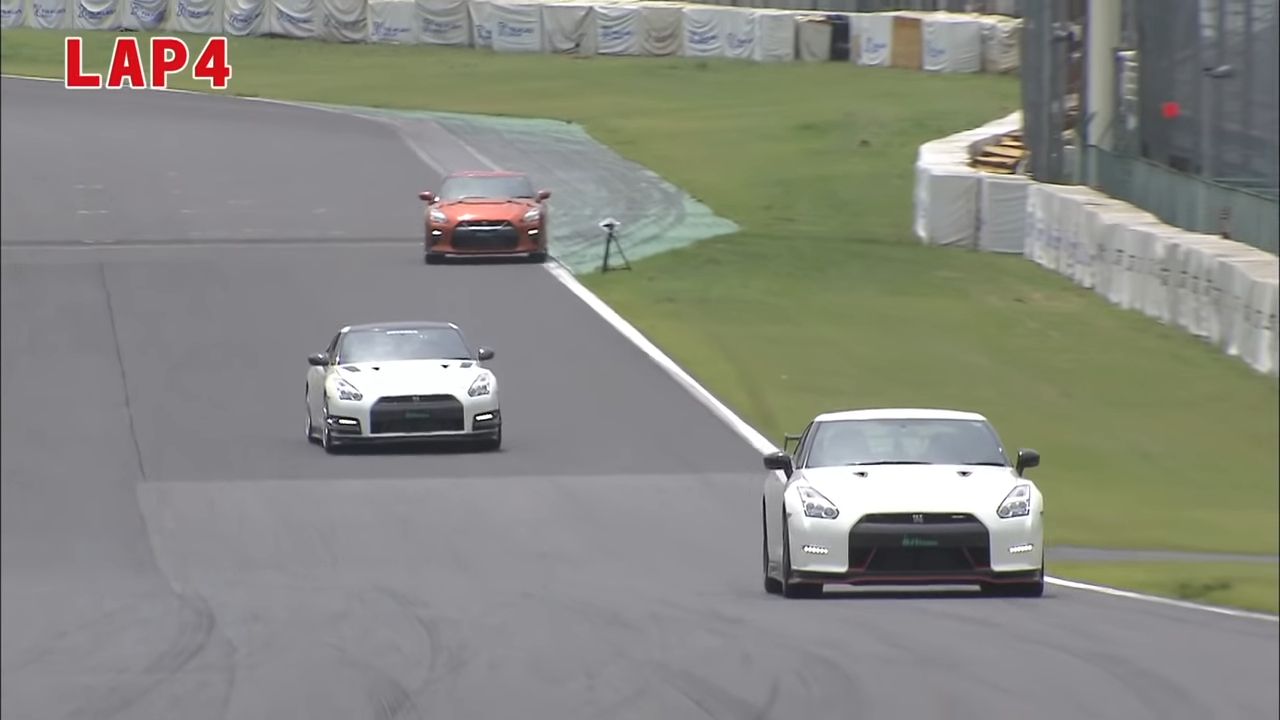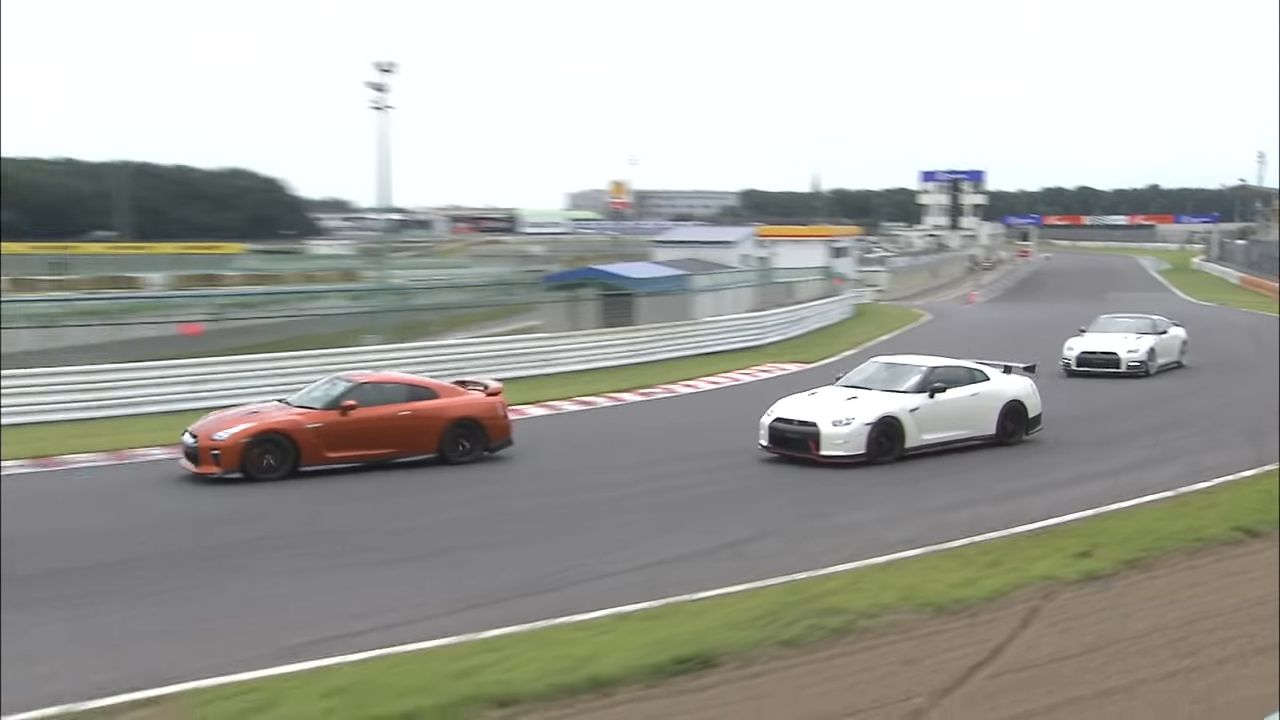The Nissan GT-R seems to be an unending topic, just like its production cycle. Debuted in 2007, the R35 GT-R is now in its 15th year – longer than the previous three GT-R generations together. Because of its unusual longevity, the R35 has had many different versions over the years, each better than the previous? Or is it? Best Motoring’s official YouTube channel featuring some of the best professional racers from Japan pits a stock 2017 GT-R versus a 2015 NISMO GT-R and a 2011 GT-R modified by Mine’s.
2017 Nissan GT-R
2017 is the year in which the R35 underwent one of its more significant updates. For the first time in 10 years, Godzilla received a new interior. The chassis and suspension were dialed more for comfort and even more power was extracted from the 3.8-liter twin-turbo V-6. Now, 570 horsepower at 6,400 RPM and 470 pound-feet (637 Nm) at 3,300 – 5,500 RPM.
However, at 3,880 pounds (1,760 kg) the 2017 GT-R is the heaviest of the R35 family. As always, power goes to all four wheels through a six-speed dual-clutch automatic. During the hot laps, the 2017 GT-R managed a best time of 1:04.89.
2015 Nissan GT-R NISMO
The NISMO GT-R is the complete opposite of the softer-sprung 2017 GT-R. The 2015 NISMO GT-R and the 2021 NISMO GT-R are, pretty much, the same. They even pack the same 600 horsepower at 6,800 RPM and 481 pound-feet (652 Nm) at 3,600 – 5,600 RPM.
At 3,792 pounds (1,720 kg), the NISMO is lighter, but more importantly, it benefits from aggressive aero and a more track-oriented suspension and chassis setup. This is reflected by the lap time, which was 1:02.98.
2011 Mine’s Nissan GT-R
The Japanese tuned Mine’s has been fiddling with GT-Rs for many years. Unlike most tuners, they don’t focus solely on high horsepower, but also on drivability and responsiveness. Essentially, their goal is to make a modified car that doesn’t feel like a modified car. Their 2011 GT-R is the most powerful car of the group, pushing 650 horsepower and 492 pound-feet (667 Nm).
At 3,615 pounds (1,640 kg), Mine’s GT-R is the lightest car here. The 2011 GT-R also benefits from a more aggressive body kit. Can Mine’s modified GT-R prove they know better than Nissan’s motorsports division? The time of 1:00.94 is definitely saying something.
The Race
The three GT-Rs line up at the grid for a five-lap race around the Tsukuba circuit. The car with the slowest lap time takes pole position while the fastest one starts from the back of the pack. Keiichi Tsuchiya drives the 2017 GT-R and despite not using launch control manages to hold the first position.
On the short straights and out of corners, both the regular GT-R and the NISMO seem to be evenly matched. However, the NISMO is more composed during the high-speed corners.
By the second lap, it has become obvious that the track is too big for three GT-Rs at once. Mine’s GT-R is trying to make a move, but the cars are too evenly matched, despite the different power-to-weight ratios. The fact that the Tsukuba circuit doesn’t have a long enough straight also plays against the more powerful NISMO and Mine’s GT-Rs.
Lap three starts with NISMO overtaking the 2017 GT-R. Meanwhile, Mine’s GT-R is struggling to find an opening. The Drift King manages to kick the back end of the 2017 GT-R on a few occasions. Towards the end of lap three, Mine’s GT-R finally overtakes the orange 2017 car.
Lap four sees no developments, but lap five starts with the Mine’s GT-R taking the lead from the NISMO GT-R, on the long straight. By that point, the Drift King is more about having fun in the 2017 GT-R than racing.
By the end of the race, Mine’s GT-R managed to increase its lead, allowing it to finish almost 1.5 seconds ahead of the NISMO. All three cars were surprisingly consistent during the race, being within 0.5 seconds of their qualifying times. The short and technical circuit proved that despite being old, the Nissan GT-R is still an immensely capable performance machine, regardless of the model year.


